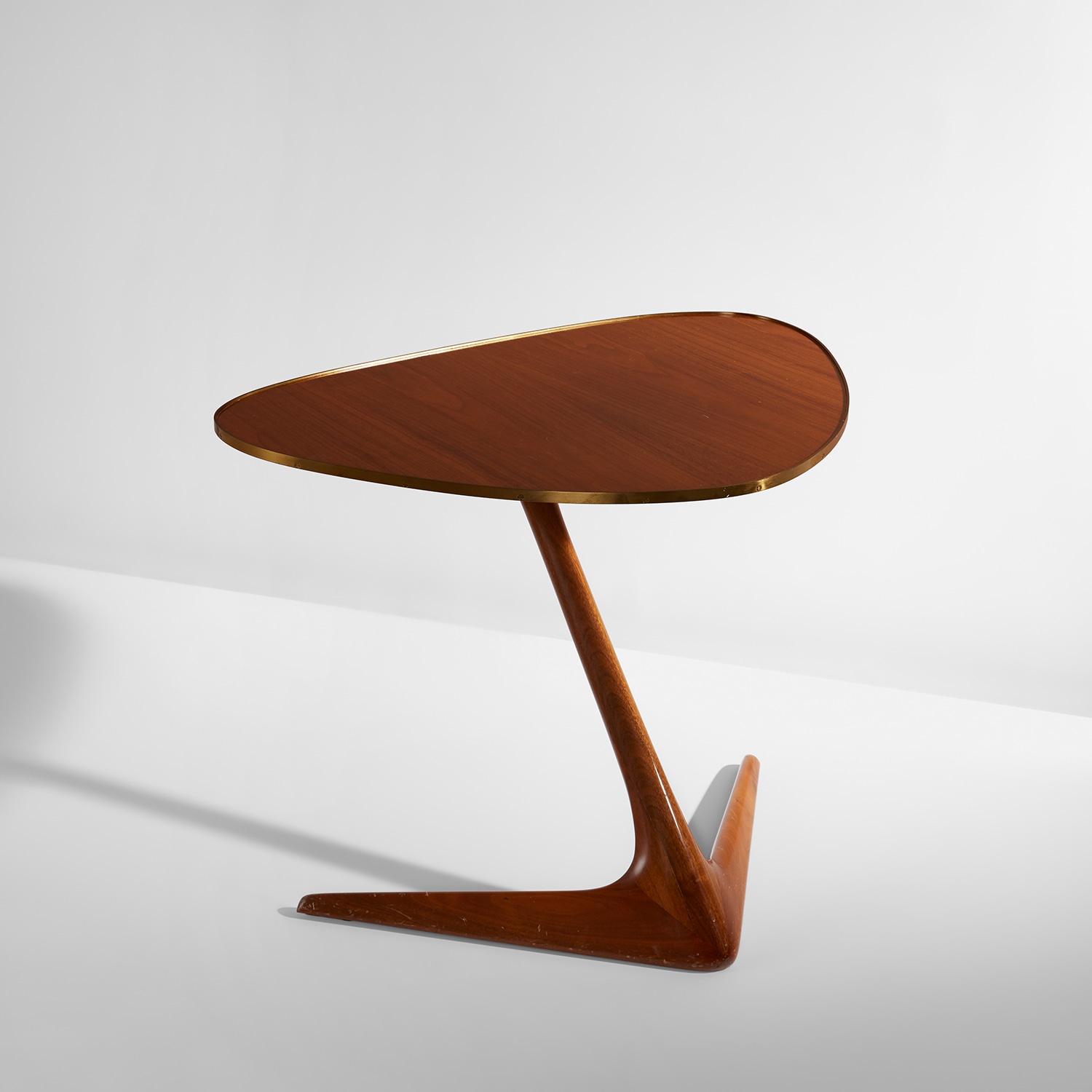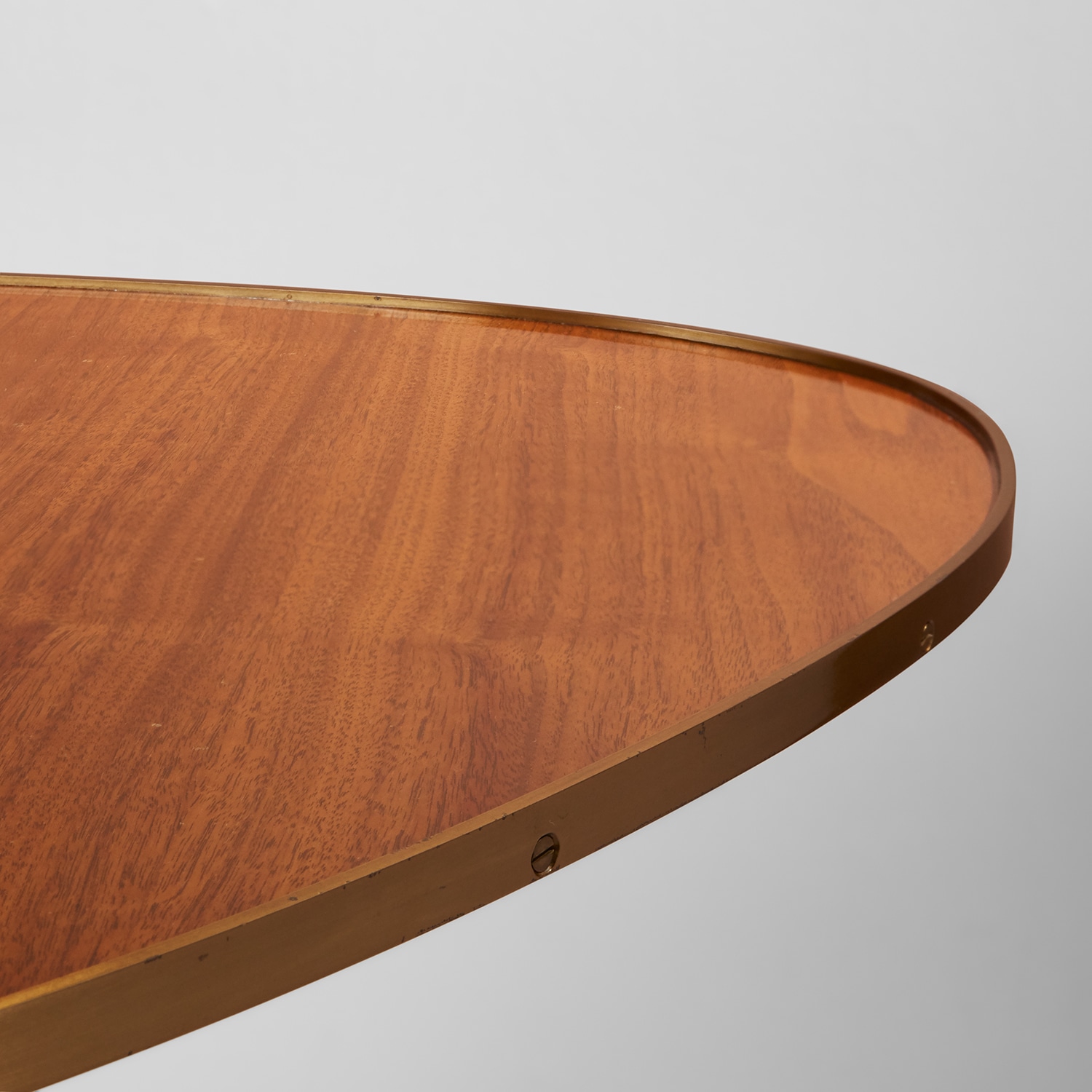



Property from a Private Manhattan Collection
41
Vladimir Kagan
"Unicorn" side table
circa 1957
Walnut-veneered wood, walnut, brass.
24 1/4 x 31 1/4 x 22 1/8 in. (61.6 x 79.4 x 56.2 cm)
Manufactured by Kagan-Dreyfuss, Inc., New York.